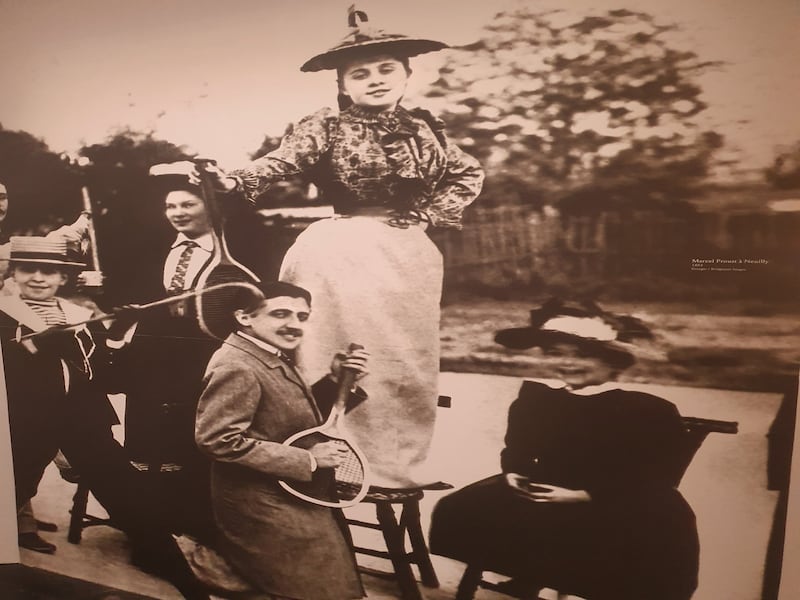The wizened beams of Pont des Arts look like they were repaired by the kind of worker you’d recommend to someone who had wronged you consistently down the years. A venture over the bridge in the centre of a tourist-saturated town shows it to be a structure of shrivelled planks, like chocolate flake or decking that needs to be ditched.
The crude plywood patching is beef-fisted: dozens of irregular offcuts are badly bolted down with crazy-angled screws. The weary beams strain to spring up underfoot. Such dodgy repairs make you feel like a master craftsman. But they also serve as a reminder of wear and tear, of gradual erosion by sun, rain and footfall. They are a lesson in why no city should be frozen in the gloopy aesthetic gel of their past. Tired historical aspic gets sanded down by the day to day. Even Notre Dame got ravaged by fire and is surrounded by building-site hoarding. Paris is a graph of fall and rise.
Not far away, a table in a small gallery groans under the weight of different types of bread. Neatly cut slices lean against their master loaves. But beware: do not try to sink your teeth into them, they are literally rock-hard.

Made of stone, they are a convincing mimic of the edible. “Palianytsia” is the Ukrianian word for bread. It also labels this exhibition by Kyiv artist Zhanna Kadyrova. Within weeks of the start of the Russian attack on her country in late February, she fled west to the Transcarpathian region. As Ukrainians became uprooted and displaced in a country of blown-up bridges, media images often portrayed them clutching suitcases and crossing rivers.
READ MORE
Rocks and bridge debris served as stepping stones to safety. In her own escape, Kadyrova noted how the eternal flow of mountain rivers had gradually rounded stones. Once she managed to install herself in a disused home and set up a basic workshop, she began her art project and created multiple perfect mimics of different types of bread, slicing them for extra magic realism. Her exhibition on the rather fancy rue du Temple uses unstomachable stone to speak to the basics of hunger, territory and petrified water-crossings to refuge.
The display’s title, Palianytsia, is a shibboleth which can sort the invaded from invader, which can sort the wheat from the chaff. Russians cannot pronounce it. Daily bread is defensively weaponised as a word.
Marcel Proust liked his bread. But madeleines were more his thing. A pivot point in his immense modernist epic, A la Recherche de la Temps Perdue, is his famous dipping of one of the small sponge cakes into a tea. This casual snacking action liberated a torrent of memories of a life well-lived and its tastes, smells and sounds. Proust corralled his privileged observations of well-heeled 19th and 20th-century Parisian society into his masterwork’s seven volumes.
The dunked cake gave literary dabblers a cartoon moment by which to pin down his lengthy syntax and prose styling. (Mindblowingly, Harold Pinter adapted the entire thing into a screenplay for Joseph Losey in 1974 but it was never made. And a French film-maker, Véronique Aubouy, is in the middle of a lifelong project where she films individuals reading two pages of the book. She reckons she will have recorded the entirety of A La Recherche in just 30 more years.)
A mere stale madeleine’s throw away from Kadyrova’s bread artworks, the Musée d’art et d’histoire du Judaisme is running an exhibition about Proust. Through the prism of the Catholic writer’s mother’s Jewishness, it focuses on his family links and representations of Jews in his work. Much is made of the anti-Semitism of the Dreyfus affair of the 1890s and early 1900s.
Paintings, hand-written notebooks and paraphernalia captivate and enlighten for two or so hours of cool indoors shade from the 30-plus-degree heat. But away from the complex layers of wealthy society, religious faith and the twisted psychological workings of memory, one simple, charming photograph speaks more than seven volumes of exquisite words.

A grainy, sepia-tinged blow-up covers a landing wall. Proust is messing around outdoors with four or five others. Away from the stuffiness of Parisian salons and groundbreaking modernist peer pressure, he pretends to play a tennis racket as a guitar. The great man of literature is rocking it up in sonic discord, turning it up to 10 and destroying his curated image as a sickly nostalgist entombed in a cork-lined room. Take it to the bridge, Marcel.




















